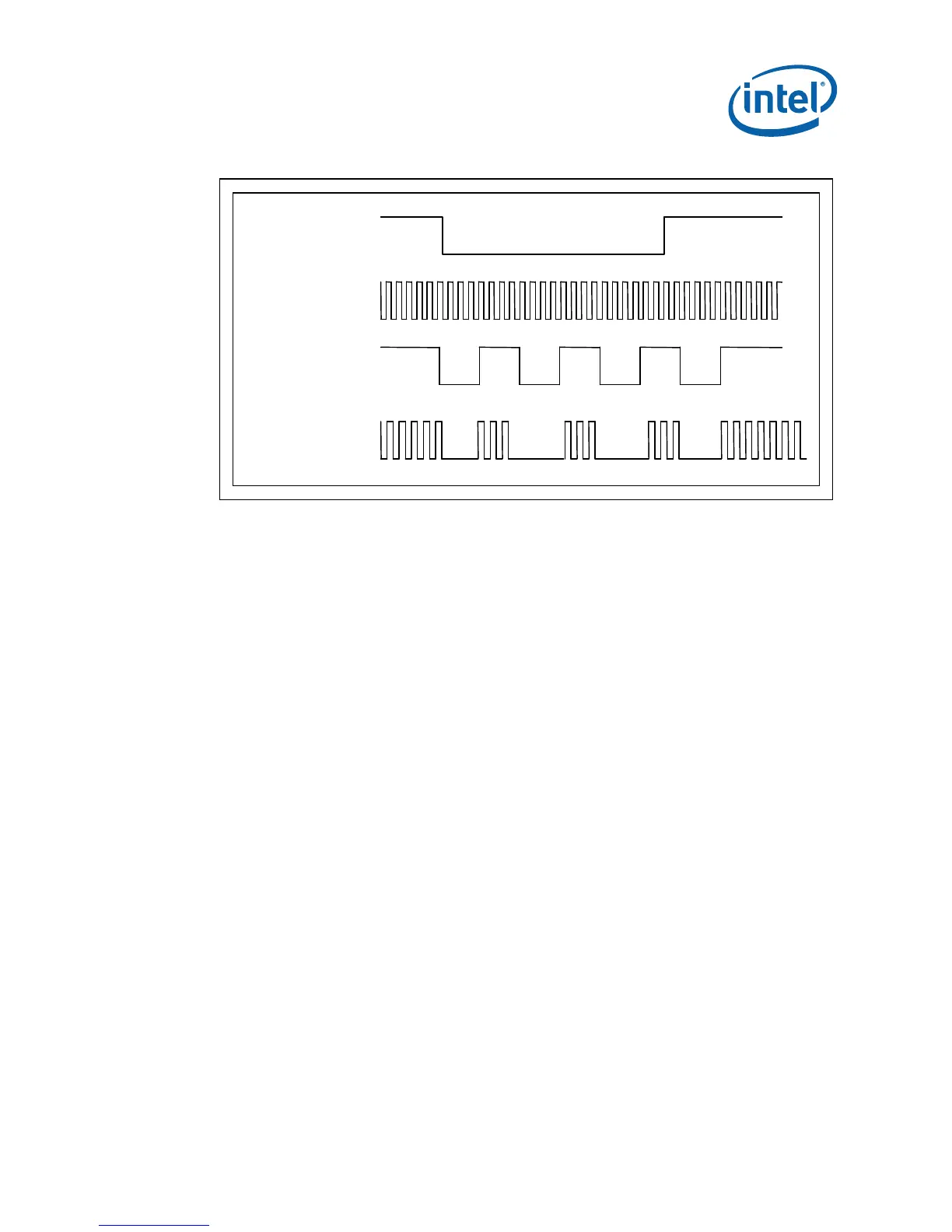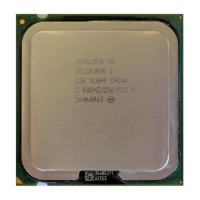Thermal Management Logic and Thermal Monitor Feature
Thermal and Mechanical Design Guidelines 35
Figure 4-1. Thermal Monitor Control
PROCHOT#
Resultant
internal clock
Normal cloc
Internal clock
Duty cycle
control
4.2.3 Thermal Monitor 2
The second method of power reduction is TM2. TM2 provides an efficient means of
reducing the power consumption within the processor and limiting the processor
temperature.
When TM2 is enabled, and a high temperature situation is detected, the enhanced TCC
will be activated. The enhanced TCC causes the processor to adjust its operating
frequency (by dropping the bus-to-core multiplier to its minimum available value) and
input voltage identification (VID) value. This combination of reduced frequency and
VID results in a reduction in processor power consumption.
A processor enabled for TM2 includes two operating points, each consisting of a
specific operating frequency and voltage. The first operating point represents the
normal operating condition for the processor.
The second operating point consists of both a lower operating frequency and voltage.
When the TCC is activated, the processor automatically transitions to the new
frequency. This transition occurs very rapidly (on the order of 5 microseconds). During
the frequency transition, the processor is unable to service any bus requests, all bus
traffic is blocked. Edge-triggered interrupts will be latched and kept pending until the
processor resumes operation at the new frequency.
Once the new operating frequency is engaged, the processor will transition to the new
core operating voltage by issuing a new VID code to the voltage regulator. The
voltage regulator must support VID transitions in order to support TM2. During the
voltage change, it will be necessary to transition through multiple VID codes to reach
the target operating voltage. Each step will be one VID table entry (i.e. 12.5 mV
steps). The processor continues to execute instructions during the voltage transition.
Operation at the lower voltage reduces the power consumption of the processor,
providing a temperature reduction.

